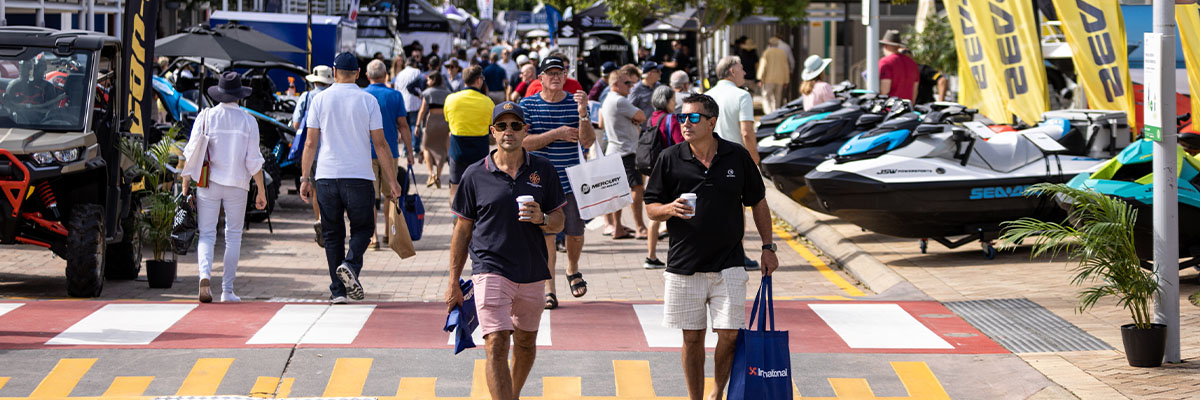Carol Fulford, editor of Marina World, gives her personal view of what’s in store for marinas in the future.
If you plot an evolutionary graph for marinas, I think the greatest point of change we’ve ever seen is the gradual move from boat park to customer-focused destination. Although marinas cater for wide-ranging user demands, every successful marina remains in business because the management team knows its customer. Today’s customer is more decisive, more demanding, and often more impatient. Tomorrow’s customer will shape tomorrow’s marina.
This means that marina managers now and in the future will more closely following general consumer trends, looking to create additional destination appeal, and flying flags for sustainability so as to uphold their long-standing commitment to the environment and also stay on side with a clientele that values their stewardship.
Market needs
Let’s face it, the current marina model fits market needs and it’s hard to envisage change in the future that would notably reshape things. On this basis, the major focus will likely see marinas move more swiftly than in the past to embrace the benefits of digital technology, and utilise and prepare for increased use of electric vehicles, boats and machinery.
Over the past decade or more – especially in the USA – we have seen large marina chains developing. This trend is set to continue and we can expect the existing networks, and new ventures, to add further to their branded portfolios. Large, successful, privately-owned marinas are more likely to attract the interest of acquisitive marina chains so we might find fewer sizeable marinas sitting alone in the private sector in the future.
Rising costs and challenges in devising fair concessions may make it harder for municipally-owned facilities to attract operators with the right skills and commitment. We could see concession fees reducing, or more joint venture or partnership approaches in the management of state-owned marinas. There is a rise in the PPP approach to marina development in many parts of the world and this will likely increase.
One of the biggest current challenges facing marina owners lies in finding the right personnel. While digitisation might help marinas reduce the number of staff they need, attracting the right people will be crucial – and possibly more costly.
Smart technology
Everyone wants to save time. Marinas – large and small, private and group – will continue to streamline and expand their management software systems to boost efficiency at multiple levels. This will give them fingertip data on berth availability, car parking space, pump-out and fuel dock usage, customer accounts, utilities, and more. Via apps, customers will gain increasing control over everything they want from their marina of choice, and hassle-free boating will be essential to customer retention. Customers will plan their day ahead via apps and expect everything to be set up and ready for them by the time they’ve parked their car.

Floating structures will continue to play a bigger part in marina design (Dockside Port Vincent floating homes, South Australia).
Energy
We will see more solar panels retrofitted on marina structures and all new marinas will rely heavily on energy-creating systems. Technology to more closely monitor water and electricity usage will minimise waste. Sufficient charging points for electric vehicles – and electric boats – will be essential and, as the electric boat fleet builds, we may see separate dedicated areas for these vessels in many marinas. Marinas will need to closely monitor demand from their specific customer base so as to be proactive about meeting needs.
Electric boat handling equipment is tentatively appearing in boatyards and drystacks and will undoubtedly, over time, become the new standard. Reduced emissions and quieter operation will please local residents who might thus be more amenable to site changes and expansions.
Amenities
Achieving destination appeal is yet again about knowing your customer – or about creating a balance that gives everyone their core requirements. Marinas have been encouraging customers to spend more time on site for decades so as to boost revenues, either directly or via concession fees, and develop a stronger sense of community. If your mates are down at the marina at the weekend, you’re more likely to want to be there, too.
But the café, pub, restaurant ethos (still very much alive) has been joined by spas, gyms, wellness centres, theatres, art galleries, retail outlets etc., and this trend is likely to continue, as is the variety of events – nautical or otherwise – that are held to offer entertainment and forge a closer bond with the local community.
Gone are the days when the supermarkets just sold food. New age ‘marinamarkets’ will strive to push the boundaries of what they can sell, service and deliver.
Usage and storage
I’ve been careful to keep to the term boat ‘user’ as one certainty for the future will be a heightened adoption of boat sharing. Boats belonging to boat clubs, charter and rental operations will likely demand greater water space and, as traffic to and from such regularly used boats far exceeds the norm, landside infrastructure will need to adapt. Sufficient sanitary facilities, car parking space, food and beverage points etc., will all need to be considered.
Space could be a greater premium than ever before and, where feasible, it will truly be the time to take the small boats out of the water and into drystack arrangements. In many parts of the world, drystack has been a slow boil – and in some not even simmering – but it’s inevitably going to become a bigger part of the future marina landscape. And if boats continue to increase in size, more flexible pontoon arrangements may need to be developed to help marina owners and developers more easily future-proof berthing configurations.
All afloat
While the floating pontoon/dock is now synonymous with the word ‘marina’, floating technology has been used for decades to support other structures afloat. This will increase as waterfront land available for new marina developments in established markets becomes scarcer and scarcer. Many future marinas will ‘float’ their offices, guest amenities, bars, restaurants, hotels and accommodation. Plans around the world for entire floating communities are often more staggeringly ‘futuristic’ than land-based equivalents.
The personal touch
Whatever changes the future brings, one thing will remain constant – the need for personal engagement. Knowing your customer is not just down to the accuracy of your data. Customers are people, and the majority won’t want an anonymous marina experience. Running a marina will always be about meeting, greeting and helping customers and developing genuine rapport with them whenever you can. Marinas now and in the future, as opposed to the boat parks of old, are above all about delivering face-to-face hospitality. And there isn’t going to be an app for that.

D-Marin digital solutions include the recent ‘smart pedestal’ which enhances control over energy consumption, digital payments and remote metering.
The personal touch
Whatever changes the future brings, one thing will remain constant – the need for personal engagement. Knowing your customer is not just down to the accuracy of your data. Customers are people, and the majority won’t want an anonymous marina experience. Running a marina will always be about meeting, greeting and helping customers and developing genuine rapport with them whenever you can. Marinas now and in the future, as opposed to the boat parks of old, are above all about delivering face-to-face hospitality. And there isn’t going to be an app for that.







